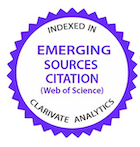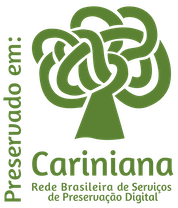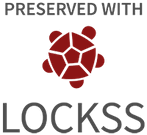Plasma suíno e ovo inteiro em rações de leitões sobre o desempenho na fase inicial e incidência de diarréia
DOI:
https://doi.org/10.5216/cab.v12i4.4588Palavras-chave:
farelo de soja, fontes protéicas, ganho de peso, leite em póResumo
Utilizaram-se 64 leitões com o objetivo de avaliar o uso de rações com leite em pó (LP), três rações com níveis crescentes de plasma suíno (PS), três rações com níveis crescentes de ovo inteiro (OI) e uma ração com alto nível de farelo de soja (FS). O PS e o OI substituíram, respectivamente, 25%, 50% e 75% e 15%, 30% e 45% da proteína bruta do leite em pó da ração LP. Durante o período experimental, avaliou-se o desempenho e a incidência de diarréia nos leitões, dos 21 aos 34 dias de idade. A utilização de OI nas rações de leitões substituindo até 45% da proteína bruta do leite em pó possibilitou aos leitões desempenho semelhante ao LP, revelando o uso potencial do OI como fonte de proteína para leitões na desmama. A utilização de alto nível de FS na ração proporcionou pior desempenho dos leitões na primeira semana após a desmama confirmando a necessidade de limitação da inclusão de FS na ração nesta fase. A utilização de níveis crescentes de PS proporcionou piora no desempenho dos leitões dos 21 aos 34 dias de idade. A utilização de níveis de PS e OI e de alto nível de FS na ração não afetou a incidência de diarréia nos leitões.
PALAVRAS-CHAVE: farelo de soja; fontes protéicas; ganho de peso; leite em pó.
Downloads
Publicado
Como Citar
Edição
Seção
Licença
Copyright (c) 2011 Ciência Animal Brasileira / Brazilian Animal Science

Este trabalho está licenciado sob uma licença Creative Commons Attribution 4.0 International License.
Autores que publicam nesta revista concordam com os seguintes termos:
- Autores mantém os direitos autorais e concedem à revista o direito de primeira publicação, com o trabalho simultaneamente licenciado sob a Licença Creative Commons Attribution que permite o compartilhamento do trabalho com reconhecimento da autoria e publicação inicial nesta revista.
- Autores têm autorização para assumir contratos adicionais separadamente, para distribuição não-exclusiva da versão do trabalho publicada nesta revista (ex.: publicar em repositório institucional ou como capítulo de livro), com reconhecimento de autoria e publicação inicial nesta revista.
- Autores têm permissão e são estimulados a publicar e distribuir seu trabalho online (ex.: em repositórios institucionais ou na sua página pessoal) a qualquer ponto antes ou durante o processo editorial, já que isso pode gerar alterações produtivas, bem como aumentar o impacto e a citação do trabalho publicado (Veja O Efeito do Acesso Livre).






























